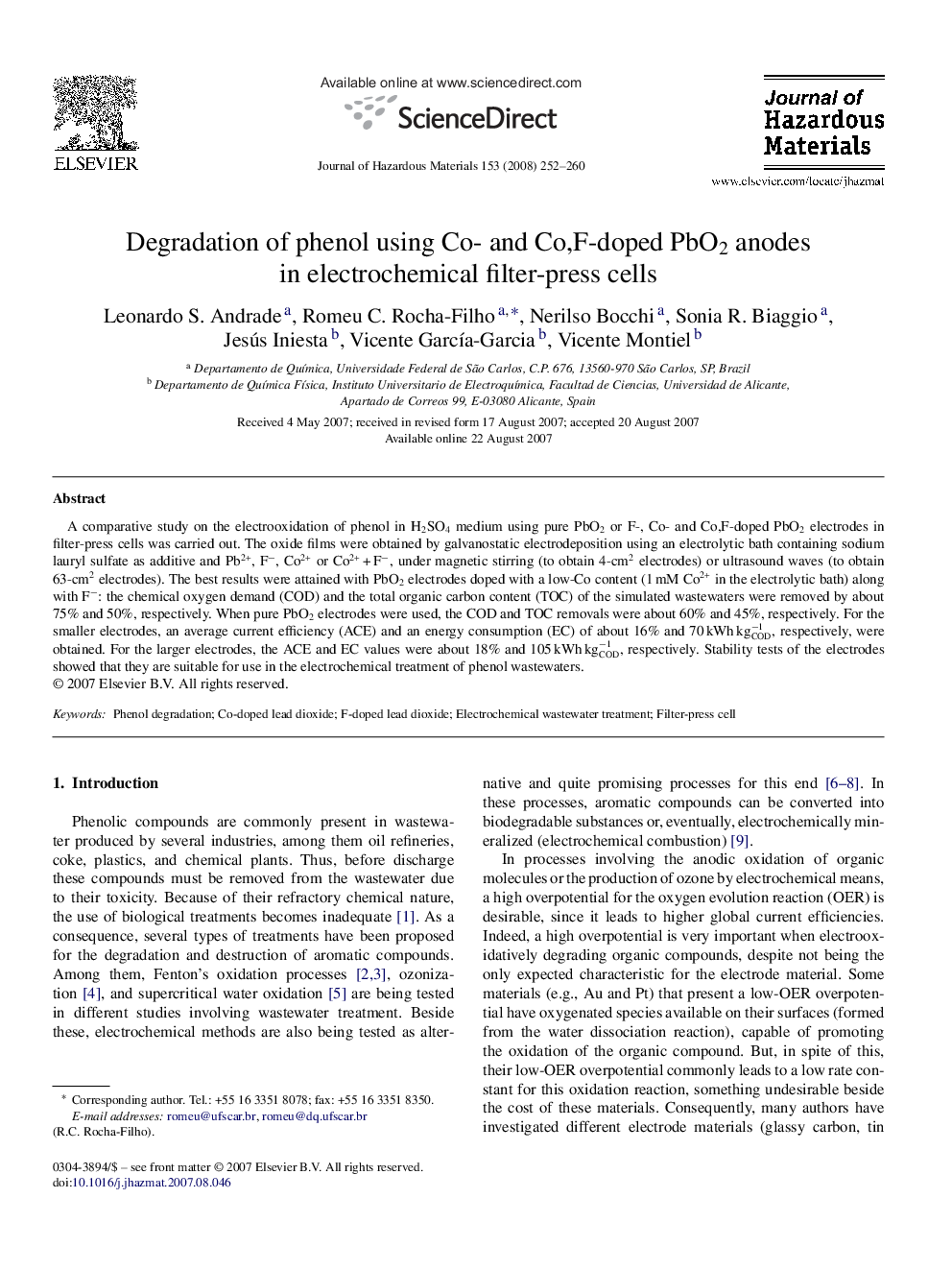| Article ID | Journal | Published Year | Pages | File Type |
|---|---|---|---|---|
| 583106 | Journal of Hazardous Materials | 2008 | 9 Pages |
Abstract
A comparative study on the electrooxidation of phenol in H2SO4 medium using pure PbO2 or F-, Co- and Co,F-doped PbO2 electrodes in filter-press cells was carried out. The oxide films were obtained by galvanostatic electrodeposition using an electrolytic bath containing sodium lauryl sulfate as additive and Pb2+, Fâ, Co2+ or Co2+ + Fâ, under magnetic stirring (to obtain 4-cm2 electrodes) or ultrasound waves (to obtain 63-cm2 electrodes). The best results were attained with PbO2 electrodes doped with a low-Co content (1 mM Co2+ in the electrolytic bath) along with Fâ: the chemical oxygen demand (COD) and the total organic carbon content (TOC) of the simulated wastewaters were removed by about 75% and 50%, respectively. When pure PbO2 electrodes were used, the COD and TOC removals were about 60% and 45%, respectively. For the smaller electrodes, an average current efficiency (ACE) and an energy consumption (EC) of about 16% and 70 kWh kgCODâ1, respectively, were obtained. For the larger electrodes, the ACE and EC values were about 18% and 105 kWh kgCODâ1, respectively. Stability tests of the electrodes showed that they are suitable for use in the electrochemical treatment of phenol wastewaters.
Related Topics
Physical Sciences and Engineering
Chemical Engineering
Chemical Health and Safety
Authors
Leonardo S. Andrade, Romeu C. Rocha-Filho, Nerilso Bocchi, Sonia R. Biaggio, Jesús Iniesta, Vicente GarcÃa-Garcia, Vicente Montiel,
